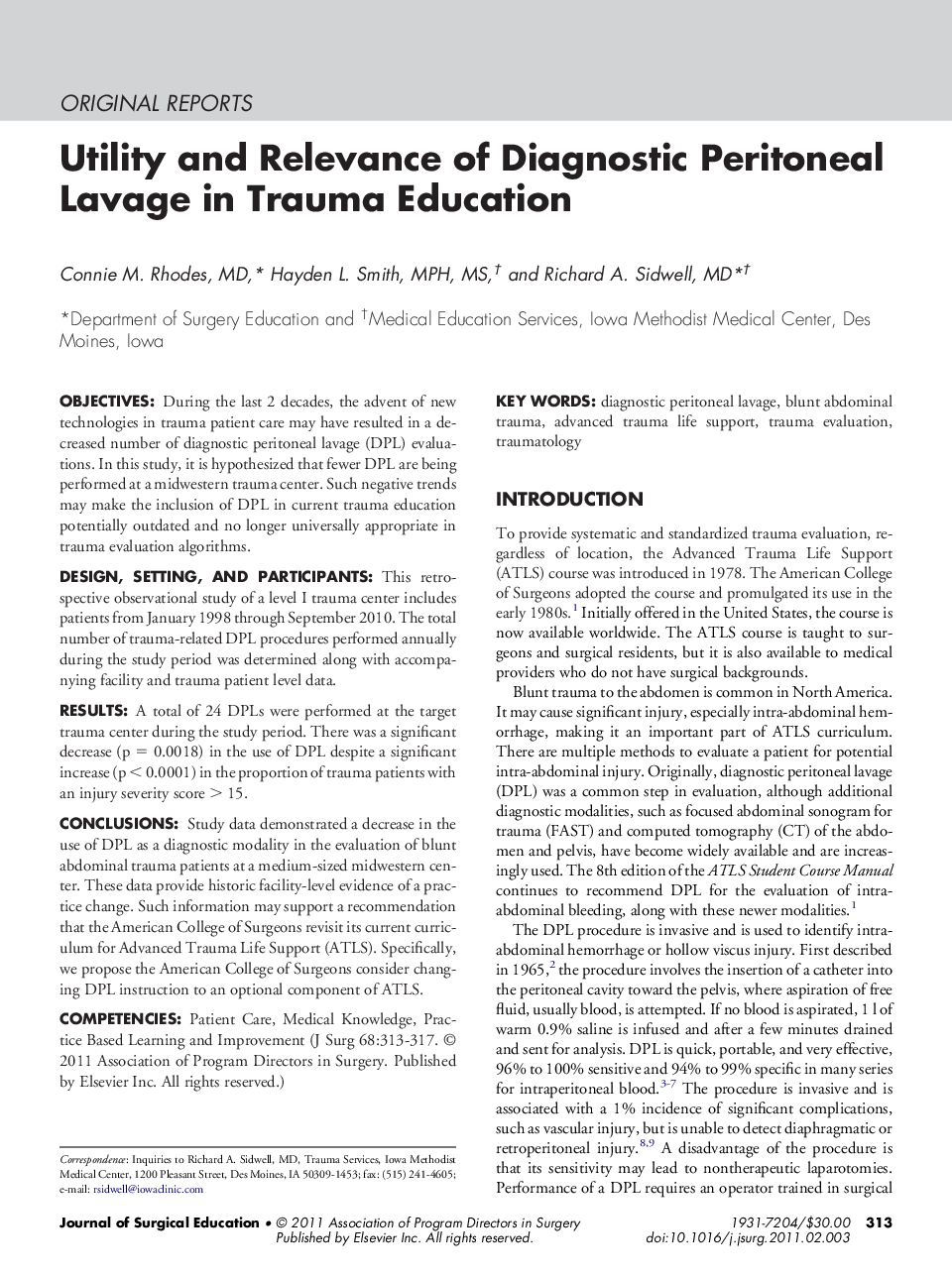| Article ID | Journal | Published Year | Pages | File Type |
|---|---|---|---|---|
| 4298227 | Journal of Surgical Education | 2011 | 5 Pages |
ObjectivesDuring the last 2 decades, the advent of new technologies in trauma patient care may have resulted in a decreased number of diagnostic peritoneal lavage (DPL) evaluations. In this study, it is hypothesized that fewer DPL are being performed at a midwestern trauma center. Such negative trends may make the inclusion of DPL in current trauma education potentially outdated and no longer universally appropriate in trauma evaluation algorithms.Design, Setting, and ParticipantsThis retrospective observational study of a level I trauma center includes patients from January 1998 through September 2010. The total number of trauma-related DPL procedures performed annually during the study period was determined along with accompanying facility and trauma patient level data.ResultsA total of 24 DPLs were performed at the target trauma center during the study period. There was a significant decrease (p = 0.0018) in the use of DPL despite a significant increase (p < 0.0001) in the proportion of trauma patients with an injury severity score > 15.ConclusionsStudy data demonstrated a decrease in the use of DPL as a diagnostic modality in the evaluation of blunt abdominal trauma patients at a medium-sized midwestern center. These data provide historic facility-level evidence of a practice change. Such information may support a recommendation that the American College of Surgeons revisit its current curriculum for Advanced Trauma Life Support (ATLS). Specifically, we propose the American College of Surgeons consider changing DPL instruction to an optional component of ATLS.CompetenciesPatient Care, Medical Knowledge, Practice Based Learning and Improvement
